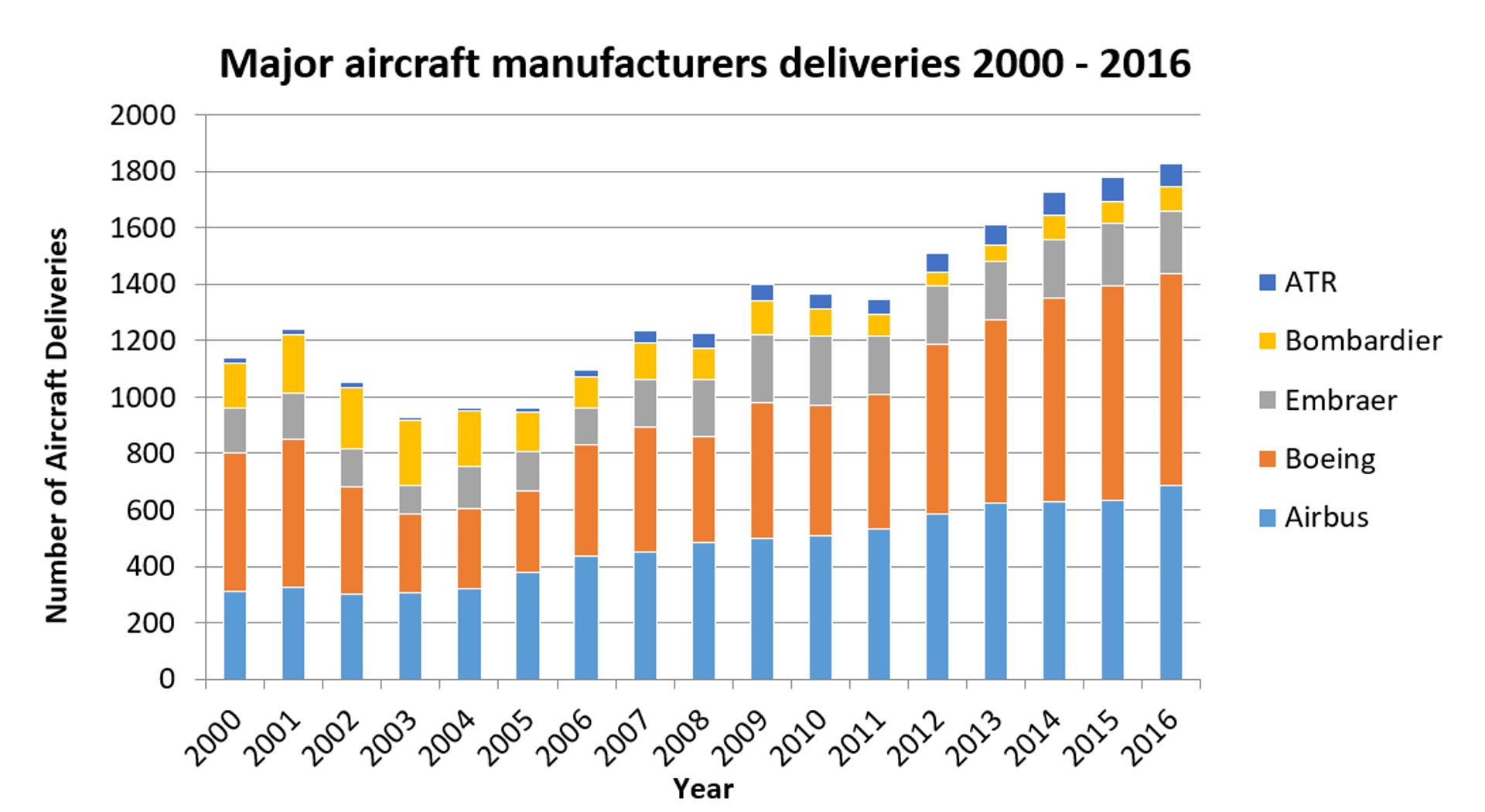New Aircraft – To inspect or not inspect, that is the question...
Prior to the coronavirus pandemic and the halting of various aircraft programmes, the aviation sector’s demand for commercial air travel around the world continued at an unrelenting rate and this in turn is matched with aircraft the rate of new aircraft deliveries continues to grow to support this need.
PHYSICAL INSPECTIONSNEW AIRCRAFT DELIVERIES
Aviation Mover Academy
3 min read

Prior to the coronavirus pandemic and the halting of various aircraft programmes, the aviation sector’s demand for commercial air travel around the world continued at an unrelenting rate and this in turn is matched with aircraft the rate of new aircraft deliveries continues to grow to support this need. In 2016 the 5 largest commercial aircraft manufacturers, Airbus Boeing, Embraer, Bombardier and ATR delivered over 1,800 new aircraft to its customers. And this rate was expected to continue with the airline manufacturers have around 13,500 aircraft order backlog, that’s around 10 years of future production at the current rate. Aircraft production rates have been on the climb consistently since 2001and future delivery rate projections have these numbers increase to over 2,000 within the next decade.
The list price value of the 1,800 aircraft delivered in 2016 was in the region of $143 Billion US Dollars and while most of these transactions dint not take place at the list price we can appreciate the asset value levels were are considering for a single industry over a 12 month period. While acquiring a property is typically our most expensive purchase in our personal lives then followed by the purchase of an automobile in both of these cases the purchase property includes a review of the goods. The review could simply be you as the have a good look around, on a car you might take it for a test drive and in the case of a house you may contract a specialist surveyor to conduct a full appraisal of the house looking for faults. This service feels to be a small price to pay for the added value, comfort and security this type of service can bring you. The same fundamental process takes place for any large and complex assets and this is true for commercial aircraft. This article aims to summarise the considerations when deciding levels of oversight on a new aircraft programme.
Each aircraft purchaser takes a very different approach to the production and delivery of its new aircraft, whether that is an airline, lessor or even a private buyer. The extremes of approach can be very stark with some operators choosing to have little or no support and rely on the manufacturer and associated regulatory system for the production and testing the aircraft successfully prior to acceptance. Equally, there are others who maintain an on-site presence of engineers, inspectors and managers which are supported by specialist from quality, safety, flight operations to ensure every last detail is checked. So why is that? Here is just a small array for some of these:
OEM quality - Certainly the OEMs believe they deliver the finest product and they are keen to highlight that this is achieve purely by their own actions.
Programme status - A purchaser approach may also be dependent on the specific aircraft. For example, delivering a Boeing 737 NG or is much like shelling pea’s from the pod with assembly only taking 7 days and a production rate of between 45 and 50 aircraft per month you would think that Boeing would have the process sorted with 50 years of production and nearly 9,500 aircraft assembled. However, would a purchaser have the view of a manufacturing programme that has suffered a number of development issues, using new advanced materials and processes of assembly and is already a number of years behind schedule for delivery.
Purchase transaction type – We may need to consider what sort of aircraft purchase is it? A banker was conducting a finance lease with an established legacy carrier may have a different approach to the airline itself.
Aircraft carrier type – With the introduction of LCC’s to the market and their efficient approach to all aspects of business, such an operation may take a different approach to a FSC.
Aircraft specification – Some airlines may have very bespoke features on their aircraft equally, others including private buyer may opt for a ‘green’ aircraft which is effectively a plain white tube with no interior so they may consider little enhancement until it has been through a customisation centre.
Fleet / Order size - The level of support can often depend on the size of the specific fleet or order. While a single aircraft may warrant a good level of oversight and order of say 6 aircraft with a period of 6 months between each delivery makes it a very drawn out exercise and can incur a considerable cost when there is no economies of scale to the operator.
Regulatory position – Production and delivery engagement can often be mandated by the applicable regulatory authority. This is typically uncommon from FAA operators or those within an EASA member state due to the modern development of hands-off / oversight / self-regulating approach. However it may be an essential part of allowing the aircraft assessment with authorities who provide direct engagement as may require this function to take place to satisfy issuance of a type certificate under that specific national aviation authority. This is a common feature among developing aviation countries or developed nations that still retain legacy regulatory undertakings so check with your specific NAA.
Regardless of the above factors most airlines / leasing companies adopt an assessment approach. The assessment can be accomplished either formally through a review process or informally based and future posts will explore these in more detail
If you need guidance and support from experienced technical specialists in this field, just get in touch.


